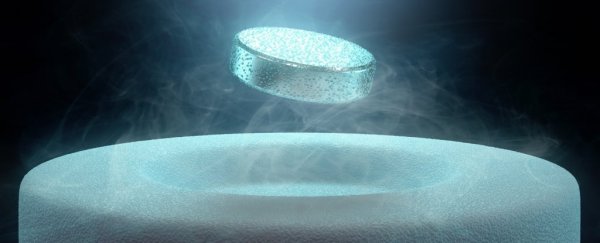Superconductivity is a phenomenon whereby a charge moves through a material without resistance.
In theory this allows electrical energy to be transferred between two points with perfect efficiency, losing nothing to heat.
Why are superconducting materials important?
In an ideal world, we'd all have superconducting materials wired into our electronics and power grids, saving huge amounts of energy and allowing us to cram circuits into confined spaces.
Unfortunately, there's a catch. Most superconducting materials only have this useful function at temperatures of just above absolute zero, where atoms barely move.
How does superconductivity work?
These cold superconductors typically work by allowing electrons to overcome their usual repulsion to each other and snuggle closer together to form what are known as Cooper pairs.
In this low energy state the identity of each individual electron becomes less certain. This allows them to slip through the crowd of atoms with ease.
While most superconducting materials are metals, there are unusual exceptions. Some require extra elements to be added to 'dope' the material, and work in subtly different ways that defy existing theories.
Room-temperature superconductors
In recent years, researchers have been pushing the temperature limits on how cold a superconducting material needs to be to function.
The current record holder is a compound made of sulphur and hydrogen, which can conduct electricity care-free at a relatively warm 203 Kelvin (-70 degrees Celsius or -94 Fahrenheit).
The only catch is it requires pressures of 1.5 million atmospheres to form.
As physicists learn more about superconducting materials they will develop more accurate models on the phenomenon, perhaps bringing us ever closer to superconductors that can operate comfortably in your pocket.
All topic-based articles are determined by fact checkers to be correct and relevant at the time of publishing. Text and images may be altered, removed, or added to as an editorial decision to keep information current.
